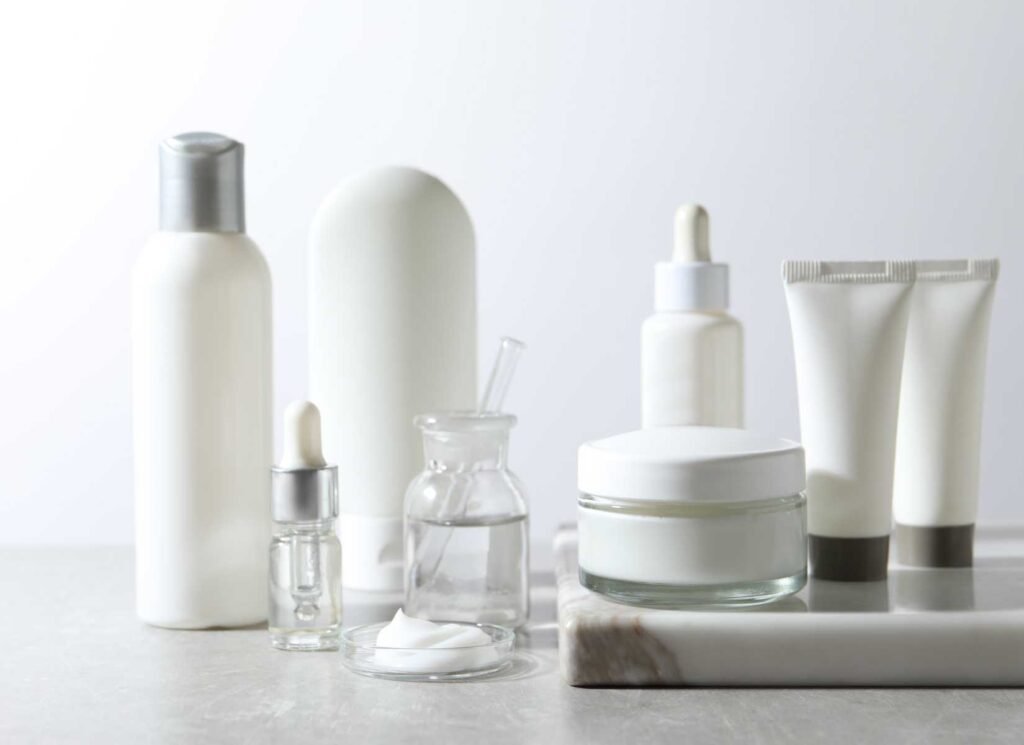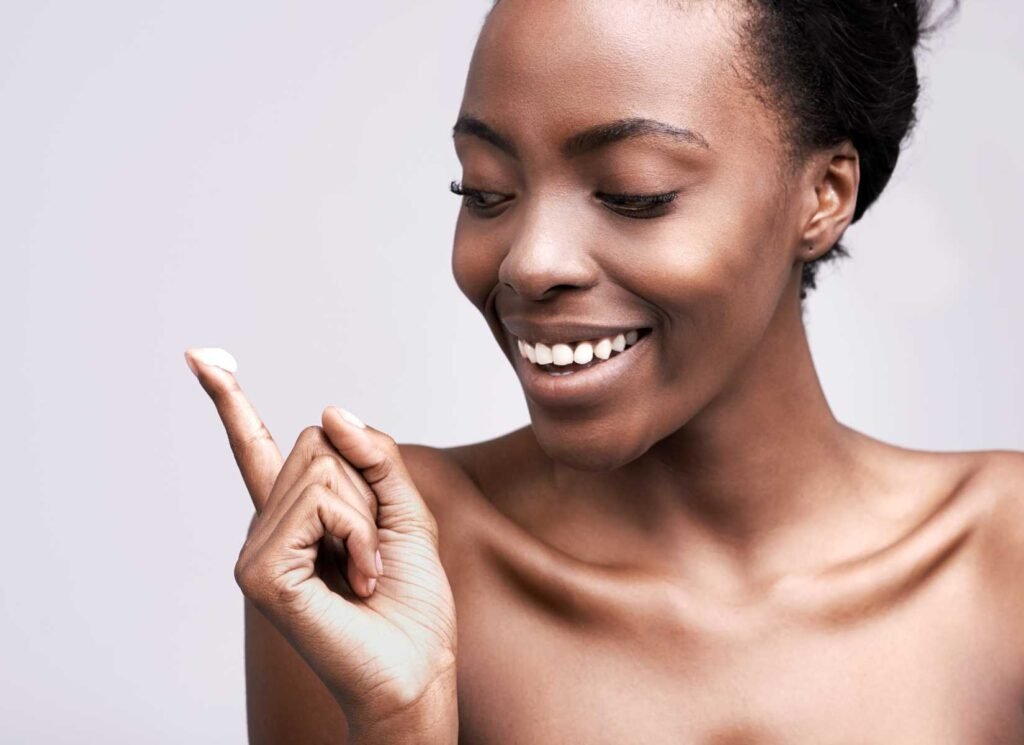Acne-prone skin can be a source of frustration and self-consciousness for many. However, the right products and skincare routine can significantly improve your skin’s health and appearance. In this comprehensive beginner’s guide, we’ll explore :
- How to choose the right products
- Concept of skin mapping,
- Different types of acne.
- Consequences of using the wrong products.
- A skincare routine.
- Helpful skincare habits to keep acne at bay.
Understanding Acne-Prone Skin
Before we dive into product selection, let’s first understand what acne-prone skin is and why it can be a concern. Acne is a common skin condition characterized by the formation of pimples, blackheads, whiteheads, and sometimes more severe forms like cysts or nodules. Acne-prone skin is more susceptible to these issues due to excess oil production, inflammation, and hormonal fluctuations.
Skin Mapping: Identifying Your Skin’s Unique Needs
Skin mapping is valuable for understanding your skin’s unique needs and selecting the right products. By dividing your face into different zones and recognizing specific issues that may be present in each area, you can tailor your skincare routine effectively. Here’s a more detailed breakdown of skin mapping:
- T-Zone: The forehead, nose, and chin are called the T-zone. These areas tend to be oilier and more prone to blackheads and whiteheads.
- Cheeks: The cheeks are often drier and prone to redness or sensitivity.
- Jawline and Chin: This area is more susceptible to hormonal acne, often appearing as painful cystic breakouts.
- Temple and Hairline: These areas can also be prone to acne, especially if you use hair products that come into contact with your skin.

Different Types of Acne
Understanding the various types of acne is essential, as each type may require different treatment approaches. Here’s a more detailed look at the different forms of acne:
- Whiteheads (Closed Comedones): These are small, flesh-colored bumps caused by blocked pores. They often appear as tiny raised bumps on the skin.
- Blackheads (Open Comedones): Blackheads occur when pores become clogged with oil and dead skin cells, turning black upon exposure to air. They are characterized by small, dark spots on the skin’s surface.
- Papules: Papules are small, red, inflamed bumps on the skin’s surface. They can be tender to the touch and are often associated with inflammation.
- Pustules: Pustules are pimples filled with pus and typically have a white or yellow head. They are a common type of acne lesion.
- Nodules: Nodules are large, painful, deep-seated lumps that develop beneath the skin’s surface. They are typically more severe and can be challenging to treat.
- Cysts: Cysts are severe forms of acne characterized by large, pus-filled lumps that can be extremely painful and are prone to scarring.
The Consequences of Using the Wrong Products
Using the wrong skincare products can exacerbate acne-prone skin and lead to a range of issues:
- Increased Breakouts: Harsh or comedogenic (pore-clogging) products can worsen acne by clogging pores and increasing oil production.
- Skin Irritation: Products with harsh ingredients can cause redness, dryness, and peeling, making your skin more sensitive.
- Skin Sensitivity: Using products unsuitable for your skin type can increase sensitivity and discomfort.
- Scarring: Aggressive treatment or picking at acne can result in scarring that may be challenging to reverse.
Choosing the Right Products for Acne-Prone Skin
Now that we understand the basics, let’s explore how to choose the right products for your acne-prone skin:
- Gentle Cleanser: Start your skincare routine with a sulfate-free, gentle cleanser that removes dirt, excess oil, and makeup without stripping your skin.
- Salicylic Acid: Look for products containing salicylic acid, a beta hydroxy acid (BHA) known for its ability to penetrate pores and help exfoliate dead skin cells. This reduces the risk of clogged pores and breakouts.
- Benzoyl Peroxide: For spot treatment, benzoyl peroxide can effectively kill acne-causing bacteria. Use it sparingly and only on affected areas to avoid excessive dryness and irritation.
- Retinoids: Consider using a retinoid (such as retinol or prescription-strength tretinoin) to promote skin cell turnover, prevent clogged pores, and fade post-acne marks. Start with a lower concentration to minimize the risk of irritation.
- Hyaluronic Acid: Incorporate a hydrating product containing hyaluronic acid to keep your skin moisturized without making it oily.
- Oil-Free Moisturizer: Opt for an oil-free, non-comedogenic moisturizer that hydrates skin without clogging pores. This helps maintain a healthy moisture balance.
- Sunscreen: Finish your morning routine with a broad-spectrum sunscreen with at least SPF 30 with visible light protection. Sunscreen protects your skin from harmful UV rays and helps prevent post-inflammatory hyperpigmentation.
Skincare Routine for Acne-Prone Skin

Now, let’s put together a comprehensive skincare routine tailored for acne-prone skin:
Morning Routine:
- Cleanser: Start your day by cleansing your face with a gentle, sulfate-free cleanser to remove overnight impurities.
- Salicylic Acid (if needed): If you have active breakouts or congested pores, apply a salicylic acid product to targeted areas or your T-zone.
- Hydrating Serum: Use a hydrating serum containing hyaluronic acid to replenish moisture.
- Oil-Free Moisturizer: Apply an oil-free, non-comedogenic moisturizer to lock in hydration and maintain a healthy moisture balance.
- Sunscreen: Finish with a broad-spectrum sunscreen with at least SPF 30 to protect your skin from UV damage and prevent post-inflammatory hyperpigmentation.
Evening Routine:
- Cleanser: Cleanse your face thoroughly to remove makeup and the day’s buildup.
- Treatment (Retinoid or Benzoyl Peroxide): Apply your chosen treatment, but avoid using retinoids and benzoyl peroxide on the same night to prevent over-drying and irritation. Start with a lower concentration and gradually increase as your skin tolerates it.
- Hydrating Serum: Reapply the hydrating serum for an extra layer of moisture.
- Moisturizer: Use your oil-free moisturizer to keep your skin hydrated and balanced.
* Please note that Retinol can be irritating to the skin, so it is important to ensure that you are not using any other additives and that you are using the correct amount. If your skin is irritated, waiting until it clears up before using retinoids is best.
Helpful Skincare Habits for Acne-Prone Skin
Now, besides a well-rounded skincare routine, incorporating these habits can further help manage acne-prone skin:

- Consistency: Stick to your skincare routine consistently, as it may take several weeks to see noticeable improvements.
- Clean Pillowcases and Bedding: Change your pillowcases and bedding regularly to prevent the buildup of oils and bacteria contributing to breakouts.
- Hands Off: Avoid touching your face, which can transfer dirt and bacteria to your skin and worsen breakouts.
- Avoid Excessive Exfoliation: Exfoliating is essential; overdoing it can lead to irritation. Stick to exfoliating 2-3 times a week.
- Stay Hydrated: Drink plenty of water to keep your skin hydrated from the inside out.
- Diet and Lifestyle: Maintain a balanced diet of fruits, vegetables, healthy fats, and proteins. Limit sugary and processed foods, as they can exacerbate acne. Manage stress through relaxation techniques, exercise, and adequate sleep.
Conclusion
Choosing the right products for acne-prone skin and adopting healthy skincare habits can make a significant difference in the appearance and health of your skin. By understanding your skin’s unique needs, identifying the types of acne you’re dealing with, and using suitable products, you can take control of your skincare routine and work towards a smoother, blemish-free complexion. Always consult with a dermatologist for personalized advice and to address severe or persistent acne issues. Remember, patience and consistency are key to achieving the best results for your skin.
Tell us about your journey with acne in the comments below.
